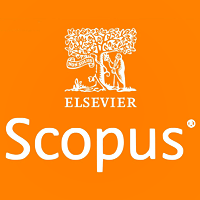
This article is an open access article distributed under the terms and conditions of the Creative Commons Attribution license (CC BY).
ORIGINAL RESEARCH
Features of intrauterine microbiota in patients with endometrial polyps
1 Kulakov National Medical Research Center for Obstetrics, Gynecology and Perinatology, Moscow, Russia
2 Sechenov First Moscow State Medical University (Sechenov University), Moscow, Russia
Correspondence should be addressed: Angelina I. Vanakova
Trubetskaya, 8/2, Moscow, 119991, Russia; moc.liamg@avokanavanilegna
Author contribution: Dolgushina NV — study concept, design; Vanakova AI — data acquisition, manuscript writing; Goncharuk OD, Muravieva VV — laboratory testing; Denisov PA — statistical analysis, visualization; Muravieva VV, Priputnevich TV — data editing.
- Nijkang NP, et al. Endometrial polyps: Pathogenesis, sequelae and treatment. SAGE Open Medicine. SAGE Publications Ltd. 2019; 7.
- Fatemi HM, et al. Prevalence of unsuspected uterine cavity abnormalities diagnosed by office hysteroscopy prior to in vitro fertilization. Hum Reprod. 2010; 25 (8): 1959–65.
- Paradisi R, et al. Recurrence of Endometrial Polyps. Gynecol Obstet Invest. 2014; 78 (1): 26–32.
- AlHilli MM, et al. Long-Term Outcomes After Intrauterine Morcellation vs Hysteroscopic Resection of Endometrial Polyps. J Minim Invasive Gynecol. 2013; 20 (2): 215–21.
- Yang J-H, et al. Factors Influencing the Recurrence Potential of Benign Endometrial Polyps after Hysteroscopic Polypectomy. PLoS One. 2015; 10 (12): e0144857.
- Indraccolo U, et al. The pathogenesis of endometrial polyps: a systematic semi-quantitative review. Eur J Gynaecol Oncol. 2013; 34 (1): 5–22.
- Tapilskaja NI, Budilovskaja OV, Krysanova AA, Tolibova GH, Kopylova AA, Cypurdeeva ND, i dr. Mikrobiota jendometrija zhenshhin s hronicheskim jendometritom i idiopaticheskim besplodiem. Akusherstvo i ginekologija. 2020; 4: 72–81. Russian.
- Cicinelli E, et al. Chronic Endometritis, a Common Disease Hidden Behind Endometrial Polyps in Premenopausal Women: First Evidence From a Case-Control Study. J Minim Invasive Gynecol. 2019; 26 (7): 1346–50.
- Cicinelli E, et al. Poor Reliability of Vaginal and Endocervical Cultures for Evaluating Microbiology of Endometrial Cavity in Women with Chronic Endometritis. Gynecol Obstet Invest. 2009; 68 (2): 108–15.
- Fang R-L, et al. Barcoded sequencing reveals diverse intrauterine microbiomes in patients suffering with endometrial polyps. Am J Transl Res. 2016; 8 (3): 1581–92.
- Teame T, et al. Paraprobiotics and Postbiotics of Probiotic Lactobacilli, Their Positive Effects on the Host and Action Mechanisms: A Review. Frontiers in Nutrition. Frontiers Media S.A. 2020; 7.
- Di Spiezio Sardo A, et al. Efficacy of hysteroscopy in improving reproductive outcomes of infertile couples: a systematic review and meta-analysis. Hum Reprod Update. 2016; 22 (4): 479–96.
- Clark TJ, Stevenson H. Endometrial Polyps and Abnormal Uterine Bleeding (AUB-P): What is the relationship, how are they diagnosed and how are they treated? Best Pract Res Clin Obstet Gynaecol. 2017; 40: 89–104.
- Tchente NC, Brichant G, Nisolle M. Asherman’s syndrome : management after curettage following a postnatal placental retention and literature review. Rev Med Liege. 2018; 73 (10): 508–12.
- Zhu N, et al. “Iron triangle” of regulating the uterine microecology: Endometrial microbiota, immunity and endometrium. Frontiers in Immunology. Frontiers Media S.A. 2022; 13.
- Critchley HOD, et al. Menstruation: science and society. American Journal of Obstetrics and Gynecology. Mosby Inc. 2020; 223 (5): 624–64.
- Lopes dos Santos Santiago G. et al. Longitudinal qPCR Study of the Dynamics of L. crispatus, L. iners, A. vaginae, (Sialidase Positive) G. vaginalis, and P. bivia in the Vagina. PLoS One. 2012; 7 (9).
- Pelzer ES, et al. A role for the endometrial microbiome in dysfunctional menstrual bleeding. Antonie van Leeuwenhoek. Int J Gen Mol Microbiol. 2018; 111 (6): 933–43.
- Ansbacher R, Boyson WA, Morris JA. Sterility of the uterine cavity. Am J Obstet Gynecol. 1967; 99 (3): 394–96.
- Mitchell CM, et al. Colonization of the upper genital tract by vaginal bacterial species in nonpregnant women. Am J Obstet Gynecol Mosby Inc. 2015; 212 (5): 611.e1-611.e9.
- Verstraelen H, et al. Characterisation of the human uterine microbiome in non-pregnant women through deep sequencing of the V1-2 region of the 16S rRNA gene. PeerJ PeerJ Inc. 2016; 2016: 1.
- Giudice LC. Challenging dogma: the endometrium has a microbiome with functional consequences! Am J Obstet Gynecol. 2016; 215 (6): 682–3.
- Chen C, et al. The microbiota continuum along the female reproductive tract and its relation to uterine-related diseases. Nat Commun Nature Publishing Group. 2017; 8 (1).
- Miles SM, Hardy BL, Merrell DS. Investigation of the microbiota of the reproductive tract in women undergoing a total hysterectomy and bilateral salpingo-oopherectomy. Fertil Steril Elsevier Inc. 2017; 107 (3): 813-20.e1.
- Koedooder R, et al. Identification and evaluation of the microbiome in the female and male reproductive tracts. Hum Reprod Update. 2019; 25 (3): 298–325.
- Keburija LK, Smolnikova VYu, Priputnevich TV. M.V.V. Mikrobiota polosti matki i ee vlijanie na reproduktivnye ishody. Akusherstvo i ginekologija. 2019; 2: 22–7. Russian.
- Peterson J, et al. The NIH Human Microbiome Project. Genome Res. 2009; 19 (12): 2317–23.
- Kitaya K, et al. Chronic Endometritis: Potential Cause of Infertility and Obstetric and Neonatal Complications. Am J Reprod Immunol. 2016; 75 (1): 13–22.
- Liang J, et al. Analysis of the microbiota composition in the genital tract of infertile patients with chronic endometritis or endometrial polyps. Front Cell Infect Microbiol. 2023; 13.
- Moreno I, et al. Evidence that the endometrial microbiota has an effect on implantation success or failure. American Journal of Obstetrics and Gynecology. Mosby Inc. 2016; 215 (6): 684–703.
- Franasiak JM, et al. Endometrial microbiome at the time of embryo transfer: next-generation sequencing of the 16S ribosomal subunit. J Assist Reprod Genet. 2016; 33 (1): 129–36.
- Margulies SL, et al. Chronic endometritis: A prevalent yet poorly understood entity. Int J Gynecol Obstet. 2022; 158 (1): 194–200.
